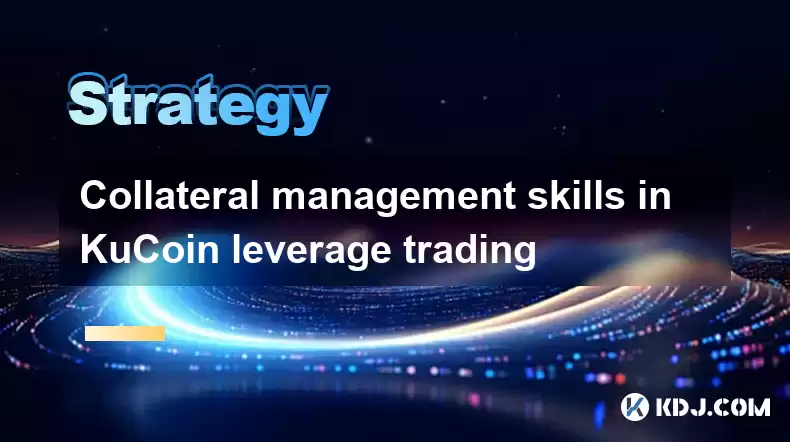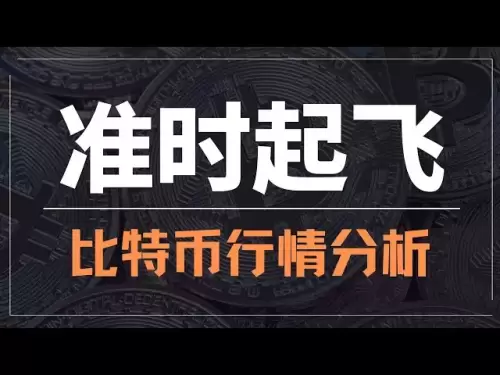-
 Bitcoin
Bitcoin $117600
2.11% -
 Ethereum
Ethereum $3907
6.13% -
 XRP
XRP $3.288
9.68% -
 Tether USDt
Tether USDt $1.000
-0.01% -
 BNB
BNB $784.8
2.00% -
 Solana
Solana $174.3
3.60% -
 USDC
USDC $0.9997
-0.03% -
 Dogecoin
Dogecoin $0.2220
8.04% -
 TRON
TRON $0.3379
0.01% -
 Cardano
Cardano $0.7829
5.46% -
 Stellar
Stellar $0.4348
8.84% -
 Hyperliquid
Hyperliquid $40.50
6.38% -
 Sui
Sui $3.757
7.22% -
 Chainlink
Chainlink $18.41
10.06% -
 Bitcoin Cash
Bitcoin Cash $581.6
1.91% -
 Hedera
Hedera $0.2586
5.37% -
 Avalanche
Avalanche $23.30
4.67% -
 Ethena USDe
Ethena USDe $1.001
0.01% -
 Litecoin
Litecoin $122.0
2.62% -
 UNUS SED LEO
UNUS SED LEO $8.972
-0.23% -
 Toncoin
Toncoin $3.338
1.14% -
 Shiba Inu
Shiba Inu $0.00001282
3.76% -
 Uniswap
Uniswap $10.38
6.88% -
 Polkadot
Polkadot $3.852
4.63% -
 Dai
Dai $1.000
0.02% -
 Bitget Token
Bitget Token $4.463
2.29% -
 Monero
Monero $263.6
-7.22% -
 Cronos
Cronos $0.1496
4.78% -
 Pepe
Pepe $0.00001106
4.91% -
 Aave
Aave $284.3
8.09%
Collateral management skills in KuCoin leverage trading
Effective collateral management is crucial for successful leverage trading on KuCoin, involving monitoring and adjusting assets to avoid liquidation and manage risks.
Apr 07, 2025 at 08:07 am

In the dynamic world of cryptocurrency trading, leverage trading on platforms like KuCoin has become increasingly popular. Leverage trading allows traders to amplify their trading positions, potentially leading to higher profits, but it also comes with increased risk. One of the critical aspects of successful leverage trading is effective collateral management. This article delves into the essential collateral management skills required for leverage trading on KuCoin, helping traders navigate the complexities and mitigate risks.
Collateral management is the process of managing the assets that a trader uses to secure their leveraged positions. In KuCoin leverage trading, collateral serves as a guarantee to the exchange that the trader can cover potential losses. Effective collateral management involves understanding how to deposit, monitor, and adjust collateral to maintain open positions and avoid liquidation. This skill set is crucial for traders looking to maximize their potential gains while minimizing risks.
Understanding Collateral in KuCoin Leverage Trading
Collateral in KuCoin leverage trading typically consists of cryptocurrencies such as Bitcoin (BTC) or stablecoins like USDT. When a trader opens a leveraged position, they must deposit a certain amount of collateral. The collateral amount is determined by the leverage ratio and the size of the position. For example, if a trader wants to open a $10,000 position with 10x leverage, they would need to deposit $1,000 in collateral.
The collateral serves as a buffer against market fluctuations. If the market moves against the trader's position, the collateral value can decrease, potentially leading to liquidation if it falls below a certain threshold known as the maintenance margin. Understanding these mechanics is essential for effective collateral management. Traders need to be aware of the risks and ensure they have sufficient collateral to withstand market volatility.
Depositing and Withdrawing Collateral
To begin leverage trading on KuCoin, traders must first deposit collateral into their margin account. Here are the steps to deposit collateral:
- Navigate to the KuCoin trading platform and log into your account.
- Go to the margin trading section and select the asset you wish to use as collateral.
- Click on the "Deposit" button and enter the amount of collateral you want to deposit.
- Confirm the transaction and wait for the funds to be credited to your margin account.
Withdrawing collateral is equally important, especially when traders want to reduce their exposure or move funds to other investments. Here's how to withdraw collateral from KuCoin:
- Go to the margin trading section and select the asset you wish to withdraw.
- Click on the "Withdraw" button and enter the amount of collateral you want to withdraw.
- Confirm the transaction and wait for the funds to be transferred to your spot wallet or external address.
Monitoring Collateral Levels
Effective collateral management involves constantly monitoring the collateral levels to ensure they remain above the maintenance margin. KuCoin provides tools and indicators to help traders keep track of their collateral. Here are some key aspects to monitor:
- Position Value: The current value of the open position, which can fluctuate with market movements.
- Collateral Value: The total value of the collateral deposited in the margin account.
- Maintenance Margin: The minimum collateral value required to keep the position open.
- Liquidation Price: The price at which the position will be automatically closed if the collateral falls below the maintenance margin.
Traders should regularly check these metrics and adjust their collateral accordingly. If the market moves against their position, they may need to add more collateral to avoid liquidation. Conversely, if the market moves in their favor, they might consider withdrawing some collateral to reduce their risk exposure.
Adjusting Collateral for Risk Management
Adjusting collateral is a crucial skill in leverage trading. Traders must know when and how to adjust their collateral to manage risk effectively. Here are some strategies for adjusting collateral:
- Adding Collateral: If the market moves against your position and the collateral value approaches the maintenance margin, adding more collateral can help prevent liquidation. This is known as topping up your margin.
- Reducing Collateral: If the market moves in your favor and the position becomes profitable, you might consider reducing your collateral to lock in gains and reduce risk. This can be done by withdrawing some of the collateral.
- Reallocating Collateral: Sometimes, traders may want to shift their collateral from one position to another. This can be done by closing one position and opening another with the same collateral.
Using Stop-Loss and Take-Profit Orders
Another important aspect of collateral management is using stop-loss and take-profit orders. These orders can help traders manage their risk and protect their collateral. Here's how they work:
- Stop-Loss Order: A stop-loss order automatically closes a position when the price reaches a predetermined level, helping to limit losses. By setting a stop-loss order, traders can ensure that their collateral is protected from significant market downturns.
- Take-Profit Order: A take-profit order automatically closes a position when the price reaches a predetermined profit level. This allows traders to lock in gains and reduce their exposure, potentially freeing up collateral for other trades.
Using these orders effectively can help traders manage their collateral more efficiently and reduce the risk of liquidation.
Understanding Leverage and Margin Calls
Leverage and margin calls are integral to collateral management in KuCoin leverage trading. Leverage amplifies both potential gains and losses, making it essential for traders to understand how it affects their collateral. Here are some key points to consider:
- Leverage Ratio: The leverage ratio determines how much collateral is required to open a position. Higher leverage ratios require less collateral but increase the risk of liquidation.
- Margin Calls: A margin call occurs when the collateral value falls below the maintenance margin. Traders receive a margin call notification and must add more collateral within a specified time frame to avoid liquidation.
Understanding these concepts helps traders make informed decisions about their collateral management strategies. They should carefully consider the leverage ratio they use and be prepared to respond to margin calls promptly.
Strategies for Effective Collateral Management
Developing effective collateral management strategies is essential for success in KuCoin leverage trading. Here are some strategies that traders can use:
- Diversification: Spreading collateral across multiple positions can help mitigate risk. If one position performs poorly, the impact on the overall collateral value may be less severe.
- Position Sizing: Carefully sizing positions based on the available collateral can help manage risk. Traders should avoid over-leveraging and ensure they have enough collateral to cover potential losses.
- Regular Monitoring: Regularly monitoring positions and collateral levels is crucial. Traders should set up alerts and use trading tools to stay informed about market movements and their account status.
- Risk Assessment: Conducting a thorough risk assessment before opening a position can help traders determine the appropriate amount of collateral to use. They should consider factors such as market volatility, their risk tolerance, and the potential impact on their overall portfolio.
Common Mistakes in Collateral Management
Despite the importance of collateral management, many traders make common mistakes that can lead to significant losses. Here are some pitfalls to avoid:
- Over-Leveraging: Using too much leverage can quickly deplete collateral if the market moves against the position. Traders should be cautious about the leverage ratio they use and ensure they have sufficient collateral to cover potential losses.
- Ignoring Margin Calls: Failing to respond to margin calls can result in liquidation. Traders should always be prepared to add more collateral if necessary and monitor their positions closely.
- Neglecting Risk Management: Not implementing proper risk management strategies can lead to significant losses. Traders should use stop-loss and take-profit orders, diversify their positions, and regularly assess their risk exposure.
- Lack of Monitoring: Failing to monitor positions and collateral levels can lead to unexpected liquidations. Traders should stay vigilant and use trading tools to keep track of their account status.
Tools and Resources for Collateral Management
KuCoin provides various tools and resources to help traders manage their collateral effectively. Here are some of the key features:
- Margin Calculator: KuCoin's margin calculator helps traders determine the required collateral for a given position size and leverage ratio. This tool can be invaluable for planning trades and managing risk.
- Real-Time Alerts: Traders can set up real-time alerts to notify them of changes in their position value, collateral value, and other important metrics. These alerts can help traders respond quickly to market movements and margin calls.
- Trading Dashboard: The trading dashboard provides a comprehensive overview of all open positions, collateral levels, and other relevant information. Traders can use this dashboard to monitor their account status and make informed decisions.
- Educational Resources: KuCoin offers educational resources, including articles, videos, and webinars, to help traders learn about collateral management and other aspects of leverage trading. These resources can be valuable for both novice and experienced traders.
FAQs
Q: What is collateral in KuCoin leverage trading?
A: Collateral in KuCoin leverage trading refers to the assets, such as cryptocurrencies or stablecoins, that traders deposit to secure their leveraged positions. It serves as a guarantee to the exchange that the trader can cover potential losses.
Q: How do I deposit collateral on KuCoin?
A: To deposit collateral on KuCoin, navigate to the margin trading section, select the asset you wish to use as collateral, click on the "Deposit" button, enter the amount, and confirm the transaction. The funds will be credited to your margin account.
Q: What is a margin call, and how should I respond to it?
A: A margin call occurs when the collateral value falls below the maintenance margin. Traders receive a notification and must add more collateral within a specified time frame to avoid liquidation. Responding promptly to margin calls is crucial for maintaining open positions.
Q: How can I use stop-loss and take-profit orders to manage my collateral?
A: Stop-loss orders automatically close a position when the price reaches a predetermined level, helping to limit losses and protect collateral. Take-profit orders close a position when the price reaches a predetermined profit level, allowing traders to lock in gains and reduce exposure.
Q: What are some common mistakes to avoid in collateral management?
A: Common mistakes include over-leveraging, ignoring margin calls, neglecting risk management, and failing to monitor positions and collateral levels. Traders should be cautious about these pitfalls and implement effective collateral management strategies.
Q: What tools does KuCoin provide for collateral management?
A: KuCoin offers tools such as a margin calculator, real-time alerts, a trading dashboard, and educational resources to help traders manage their collateral effectively. These tools can assist in planning trades, monitoring positions, and making informed decisions.
Disclaimer:info@kdj.com
The information provided is not trading advice. kdj.com does not assume any responsibility for any investments made based on the information provided in this article. Cryptocurrencies are highly volatile and it is highly recommended that you invest with caution after thorough research!
If you believe that the content used on this website infringes your copyright, please contact us immediately (info@kdj.com) and we will delete it promptly.
- EigenLayer, Restaking, and Ethereum: Navigating the Hype and the Hazards
- 2025-08-08 06:30:12
- Super Bowl 59: Jon Batiste to Jazz Up the National Anthem
- 2025-08-08 06:30:12
- Cold Wallet Crypto in 2025: The Future is Now, Ya'll
- 2025-08-08 05:10:13
- MAGACOIN, SOL, and ADA: A Tale of Shifting Tides in Crypto
- 2025-08-08 05:10:13
- SHIB Price, PEPE, and the Memecoin Supercycle: Who Will Reign Supreme?
- 2025-08-08 05:50:12
- Pudgy Penguins Price Prediction: Google Trends & Breakout Signals
- 2025-08-08 05:50:12
Related knowledge

How to avoid common crypto investment mistakes?
Jul 13,2025 at 01:35am
Understanding the Risks of Crypto InvestmentInvesting in cryptocurrency can be highly rewarding, but it also comes with significant risks. One of the ...

What is a long-short crypto strategy?
Jul 15,2025 at 10:56am
Understanding the Basics of a Long-Short Crypto StrategyA long-short crypto strategy is an investment approach where traders simultaneously take long ...

What is a long-short crypto strategy?
Jul 11,2025 at 01:28pm
Understanding the Basics of Long-Short Crypto StrategyA long-short crypto strategy is an investment approach where traders take both long and short po...

How to use the RSI indicator for crypto?
Jul 12,2025 at 03:56pm
Understanding the RSI Indicator in Cryptocurrency TradingThe Relative Strength Index (RSI) is a momentum oscillator used to measure the speed and chan...

Is copy trading a good strategy for crypto beginners?
Jul 12,2025 at 08:28am
Understanding Copy Trading in the Cryptocurrency MarketCopy trading is a strategy where novice traders replicate the trades of experienced investors a...

How to build a crypto portfolio with $1000?
Jul 13,2025 at 08:14pm
Understanding the Basics of Cryptocurrency InvestmentBuilding a crypto portfolio with $1000 starts with understanding the fundamentals of cryptocurren...

How to avoid common crypto investment mistakes?
Jul 13,2025 at 01:35am
Understanding the Risks of Crypto InvestmentInvesting in cryptocurrency can be highly rewarding, but it also comes with significant risks. One of the ...

What is a long-short crypto strategy?
Jul 15,2025 at 10:56am
Understanding the Basics of a Long-Short Crypto StrategyA long-short crypto strategy is an investment approach where traders simultaneously take long ...

What is a long-short crypto strategy?
Jul 11,2025 at 01:28pm
Understanding the Basics of Long-Short Crypto StrategyA long-short crypto strategy is an investment approach where traders take both long and short po...

How to use the RSI indicator for crypto?
Jul 12,2025 at 03:56pm
Understanding the RSI Indicator in Cryptocurrency TradingThe Relative Strength Index (RSI) is a momentum oscillator used to measure the speed and chan...

Is copy trading a good strategy for crypto beginners?
Jul 12,2025 at 08:28am
Understanding Copy Trading in the Cryptocurrency MarketCopy trading is a strategy where novice traders replicate the trades of experienced investors a...

How to build a crypto portfolio with $1000?
Jul 13,2025 at 08:14pm
Understanding the Basics of Cryptocurrency InvestmentBuilding a crypto portfolio with $1000 starts with understanding the fundamentals of cryptocurren...
See all articles

























































































